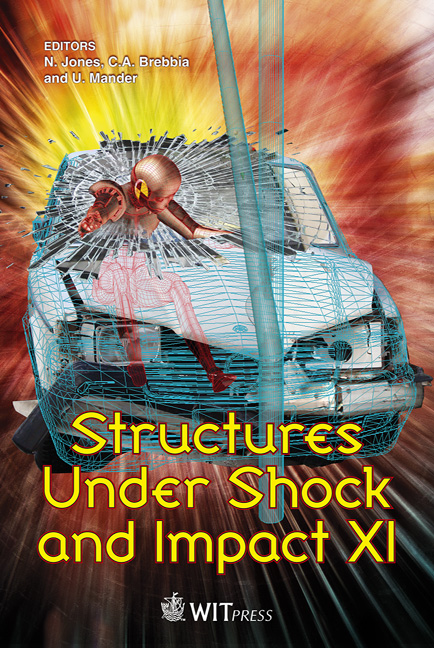Transient Response Of A Laminated Sandwich Plate With Viscoelastic Core Subjected To Air Blast: Theory And Experiment
Price
Free (open access)
Transaction
Volume
113
Pages
8
Page Range
113 - 124
Published
2010
Size
494 kb
Paper DOI
10.2495/SU100101
Copyright
WIT Press
Author(s)
D. Balkan, O. Acar, H. S. Türkmen & Z. Mecitoğlu
Abstract
This paper is focused on the theoretical and experimental study of the dynamic behavior of sandwich composite plates with a viscoelastic core subjected to blast load. The sandwich plate has carbon/epoxy face sheets and an aramid honeycomb core. The clamped boundary conditions are considered for all edges of the plate. The sandwich plate is modeled using first order shear deformation theory considering the geometrical nonlinearities. The equations of motion are derived by the use of the virtual work principle for the sandwich plate. The viscoelastic behavior is modeled by using the Kelvin-Voigt theory. The equations of motion are reduced into the time domain using Galerkin’s method. The nonlinear-coupled equation system is solved by Mathematica Software. In the experimental study, the pressurized air in a shock tube is impinged on the sandwich composite plate by rupturing a membrane in front of the shock tube. The strain-time histories obtained from the theoretical analysis are compared with the experimental ones and a good agreement is found. Keywords: blast load, Kelvin-Voigt model, Galerkin’s method. 1 Introduction Sandwich plates have been used extensively in the aircraft industry, both in civil and military aircraft, since 1940 [1]. They have now begun to be used in the structure of missiles and satellites. The use of sandwich materials in military structures is also growing rapidly.
Keywords
blast load, Kelvin-Voigt model, Galerkin’s method





